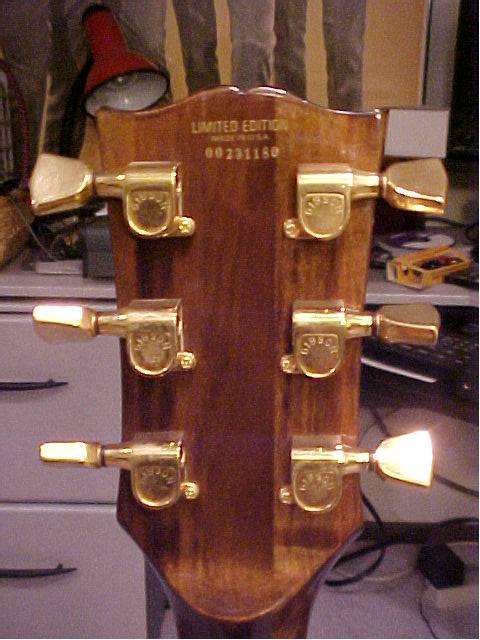Gibson Serial Number Dater
The age of a Gibson guitar, along with the physical condition and relative rarity, are the major factors in determining its value. While physical condition can be assessed with a careful inspection, rarity and date of manufacture are not always easy to determine. But the serial number on a Gibson can tell you when the guitar was made. With that information, you can determine its rarity and, ultimately, its worth.
Earlier models had an ink stamped serial number or no serial number at all, these are much more difficult to date. Around 1977, Gibson introduced the serialization method that they primarily use to this day at Gibson USA, Gibson Acoustic, and the Gibson Custom facility in Memphis, TN. For example, the serial number 90237XXX corresponds to a production date of 1/23/97. The last three (or four as of 2005) digits signify the location of production and batch number, respectively, but this information isn’t necessary to accurately dating your instrument. Vintage Gibson serial numbers Gibson used various systems of numbering their instruments, and some records exist that can give a clue to a shipping date. 50s and early 1960s details are fairly straightforward, but later serial numbers (particularly around 65-75) can cause more confusion than clarity.
Locate the serial number on your Gibson. For acoustic instruments, the serial number is typically located inside the sound hole at the neck joint or on a piece of paper glued inside the guitar and visible through the sound hole. On electric guitars, the serial number is generally printed on the back of the headstock.
Gibson Model Number
Decipher your serial number if it's eight digits. Since 1977, Gibson has used the following method: The first and fifth numbers indicate the last two digits of the year the instrument was produced, the second through fourth digits tell the day of the year it was produced and the last three digits indicate the production rank. For example, the serial number 81449243 means the guitar was the 243rd instrument made on the 144th day of 1989.
Use the Blue Book of Electric Guitars, available for free at Gibson's website, to date your instrument if it has a different type of serial number. Over the years, Gibson has gone through several different serial-number changes, sometimes resulting in multiple guitars with the same number. The book, which lists all the company's historical serial number schemes, is an invaluable resource when dating vintage Gibson guitars.
If you're still having trouble accurately dating your Gibson, take pictures of the guitar, including the serial number, and upload them to the customer service section on the company's website. In most cases, they'll help you date your instrument.
Gibson amplifiers have become known amongst guitarists for their warm, consistent sound and reliability. While you may be willing to pay a high price for a vintage Gibson amp, you should always verify the date of the amp to avoid being ripped off. By verifying the date of manufacture of the Gibson amp you want to buy, you will be able to breath easy that you are getting an authentic amp for the right price.
Locate the speaker which can be found in the back of the amp.
Find the source code stamp, which is a series of six or seven numbers, that will be stamped on the speaker. The stamp can be found on any part of the speaker, but it will be readily visible no matter the location.
Write out the source code and divide it into three sections. The first three numbers represent the company that made the speaker, the fourth (and fifth if there are seven numbers) represent the year the part was made, and the last two numbers represent the week that the part was made during that year.

Make note that a source code beginning with 220 was made by Jenson, 328 by Utah, 285 Rola, 137 CTS and 134 by Centralab. Amps with Utah speakers are usually dated to 1945 and earlier, and Rola speakers from the late 1940ss and early 1950s. Jenson speakers are from the 1950s, and CTS and Centralab speakers were used from the 1960s onward. This is good to know if you have a six number source code as the year number can then be lined up with the right decade to properly identify the year the amp was made.
Gibson Les Paul Serial
Contact the Gibson company if the source code cannot be found, or has been rubbed off, and read them the serial number found on the back of the body of the amp. While the serial numbers were randomly assigned and do not immediately tell you the age of the amp, Gibson has a large database of serial numbers that than can search to find out which year and week that your amp was made.
Warning
Gibson Guitar Serial Numbers And Value

Always verify the serial number of a vintage Gibson amp with the company before purchasing the amp. It is always good to verify the age that the serial number suggests with what the speaker source code suggests to ensure you are paying for the amp you think you are getting.